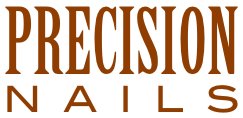It’s not possible to interact personally with every person who may be interested in our salon services. That’s why I invest in a brochure and website to promote my business to both existing and potential clients. I strongly recommend that other salon owners do the same. However, unless you’re a competent writer, graphic designer and website developer, you shouldn’t attempt these marketing projects on your own. Without the requisite ability, the results would be inferior and amateurish, and that’s certainly not the first impression I’d want to make.
If that sounds snobbish, understand that I rarely encounter a salon brochure or website that impresses me. I don’t accept the excuse of a limited budget; it doesn’t cost any more to spell words correctly and use proper grammar. Even when salon owners spend a lot of money on their marketing, the results can be disappointing and ineffective, repelling clients rather than attracting them.
I’ve already written extensively about my experience developing a salon website (Stylist, February, 2012), an ongoing collaborative process between my graphic designer/website developer and myself. Every month, we update and refine the content to keep it relevant. With so much focus on establishing an online presence, some might question whether a brochure is worth doing. After all, a brochure doesn’t have the same reach as a website, and once printed, it cannot be changed without reprinting, rendering the previous one obsolete. While I appreciate the power and convenience of an effective website, I believe that a brochure is still necessary as a tangible representation of my salon.
Producing a good brochure may seem simple, but if that were true, more salons would have them. In my Brochure Basics class, I challenge salon owners to communicate the culture of their salon and the value of their services in written form. This isn’t easy. How do you describe the experience of your salon to those who’ve never experienced it? How are your services different from the competition’s? How do you respond to the most frequently asked questions? If a salon owner hasn’t considered any of this, then it’s about time!
A brochure can’t perform services, but if done well, it will generate interest and give you more time to do nails rather than talk about them. Much more than just a price list, an effective brochure:
- Represents your salon in a professional way
- Includes your salon’s location, contact information, hours, etc.
- Describes your services, including pricing and timing
- Prioritizes your most profitable services
- Explains salon policies (cancellations, payment, etc.)
- Instructs clients about scheduling appointments
- Answers frequently asked questions
- Uses colors/fonts/images in an attractive format
To make a brochure even more distinct, a salon owner can add information about the salon’s history, its staff or some other point of difference. For example, in the Precision Nails brochure, I dedicate an entire panel of our 8-panel brochure to “Our Philosophy.” It might seem ridiculous that a nail salon would even have a philosophy statement, and I don’t expect everyone to agree with it, but this conveys my commitment and perspective on the nail industry:
For more than 20 years, Precision Nails has redefined nail care through innovations in safety, quality and professionalism.
Precision Nails protects your safety:
- we sanitize our hands and put on clean gloves before your service begins;
- we use a new file for every service and protect you from cross-contamination;
- we autoclave sterilize our metal tools, exceeding state board requirements;
- we refuse to provide any service that cannot be performed safely.
Precision Nails delivers quality:
- we employ licensed beauty professionals;
- we continually train our staff to meet our high standards and your specific needs;
- we depend on superior products and our advanced technical skills, not drills;
- we serve our clients in private rooms, equipped with leather recliners.
Precision Nails promotes professionalism:
- we provide professional nail services, not personal relationships;
- we respect the privacy of our clients, and request that you respect ours;
- we value your time and work efficiently and diligently to remain on schedule;
- we support the beauty industry through education, trade shows, competitions and compliance with all applicable laws.
If your salon needs a brochure, or the existing one needs updating, I suggest the following:
- Set a deadline
- Gather examples from other salons/spas/businesses
- DO NOT PLAGIARIZE
- Write your own service descriptions, salon policies, etc.
- Consider adjusting your prices
- Work with a graphic designer for professional results
- Choose a reputable printer to handle your brochure
- Select colors/fonts/images that reflect your salon’s decor
- Proof your brochure, and then proof it again
- Order at least 1000 pieces for better pricing
- Plan on revising/reprinting your brochure every year
The content of the brochure is as important as how it looks. And I obsess over the wording until it cannot possibly be any more direct, concise or accurate. For the next reprinting, I have the opportunity to make changes, like adjusting prices, adding/deleting services, etc.
Once your brochures are printed, put them to good use:
- Give to clients for reference at home or to share
- Laminate copies for the front desk and work stations
- Frame and hang in the salon window for reading from outside
- Display at your chamber of commerce
- Distribute to other local businesses
- Include with gift cards
- Adapt content to your online presence
- Reference when talking on the phone
Together with your salon website, a well-designed brochure will “speak your truth,” even when you can’t find the time.
By Jaime Schrabeck, Ph.D.



